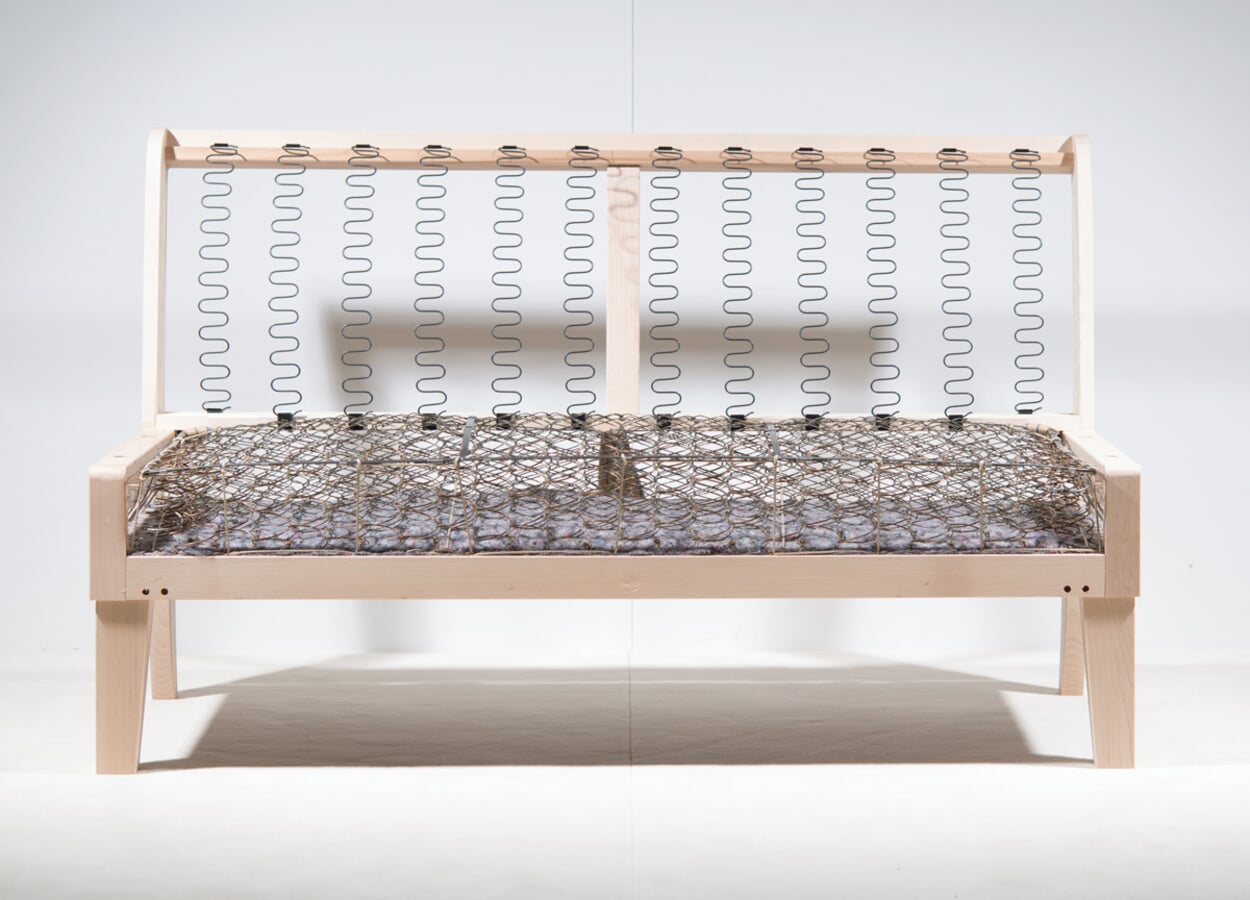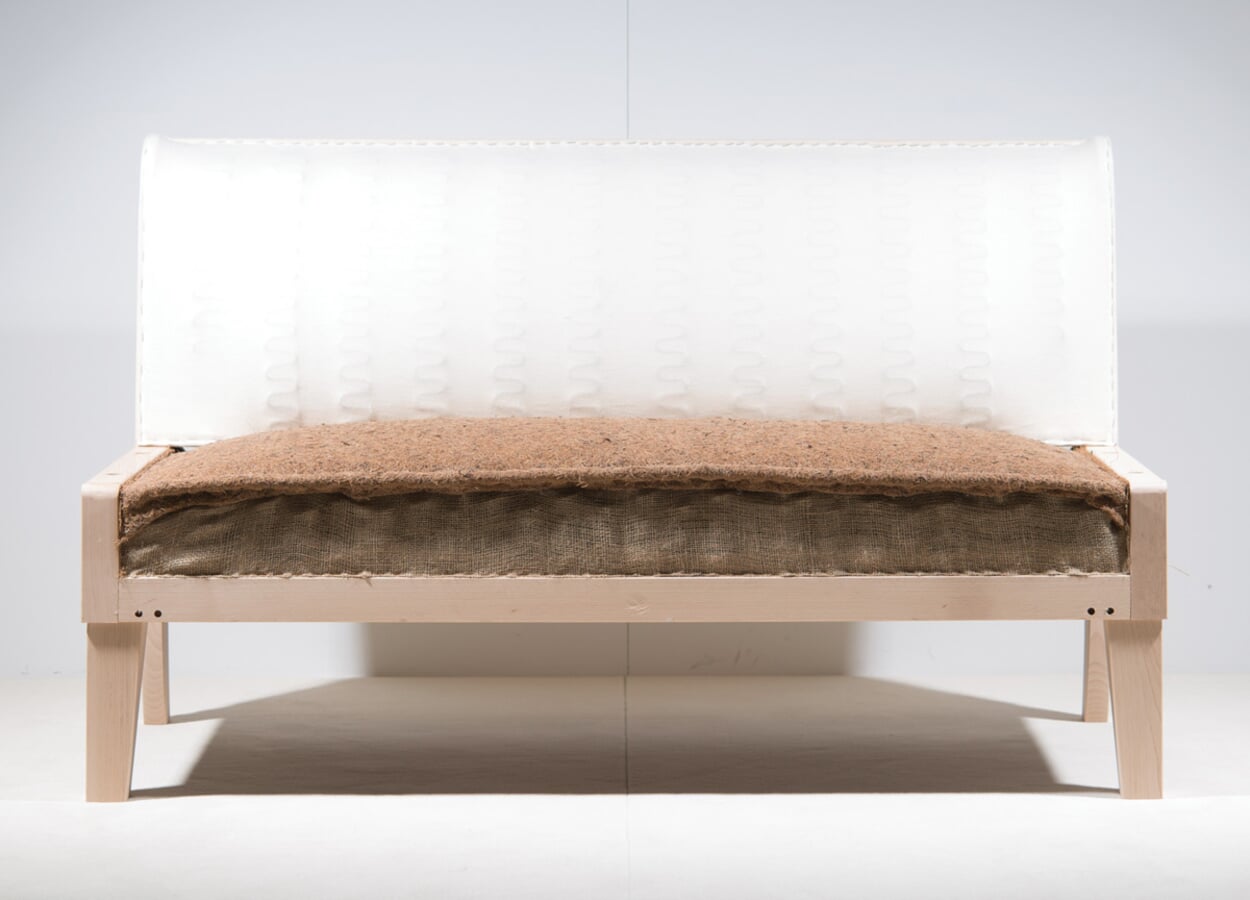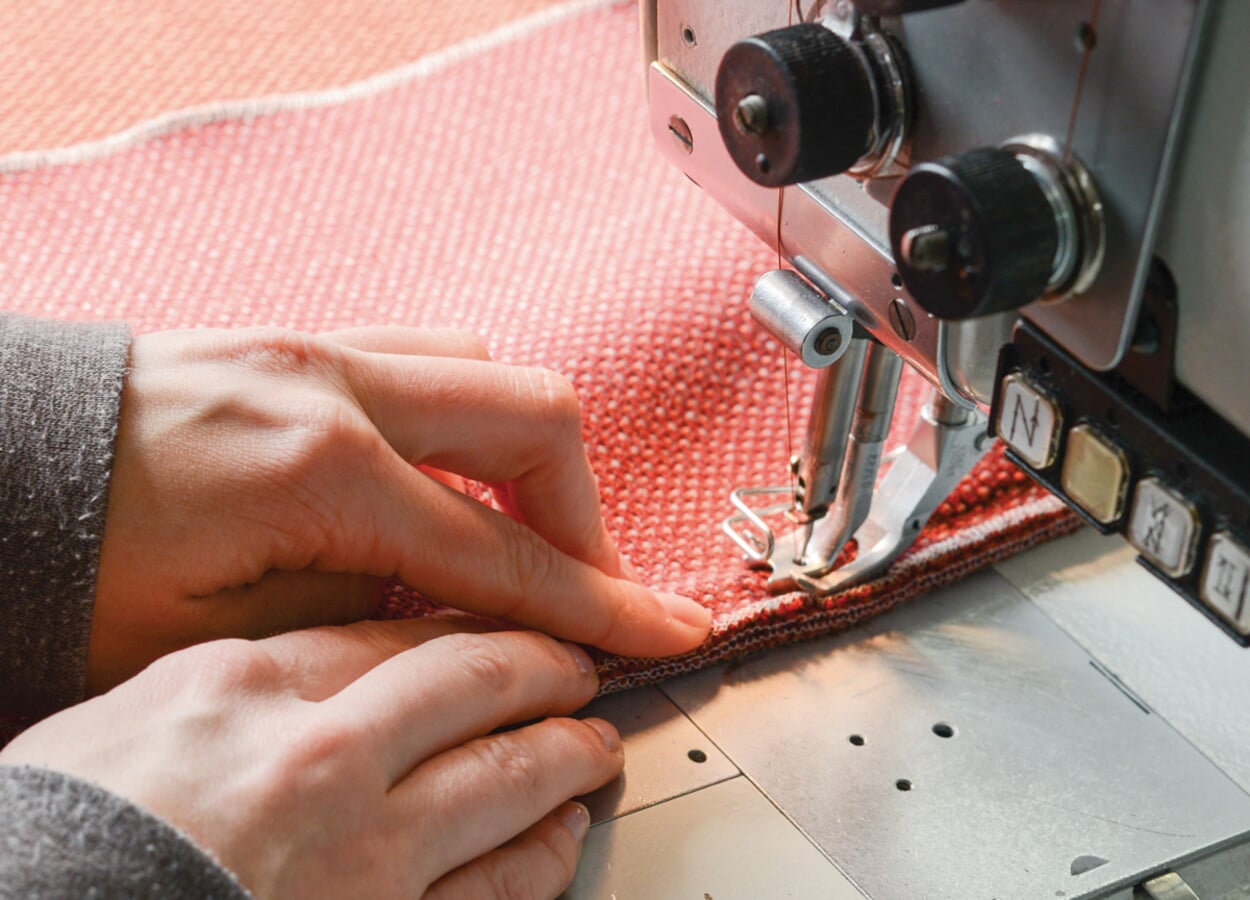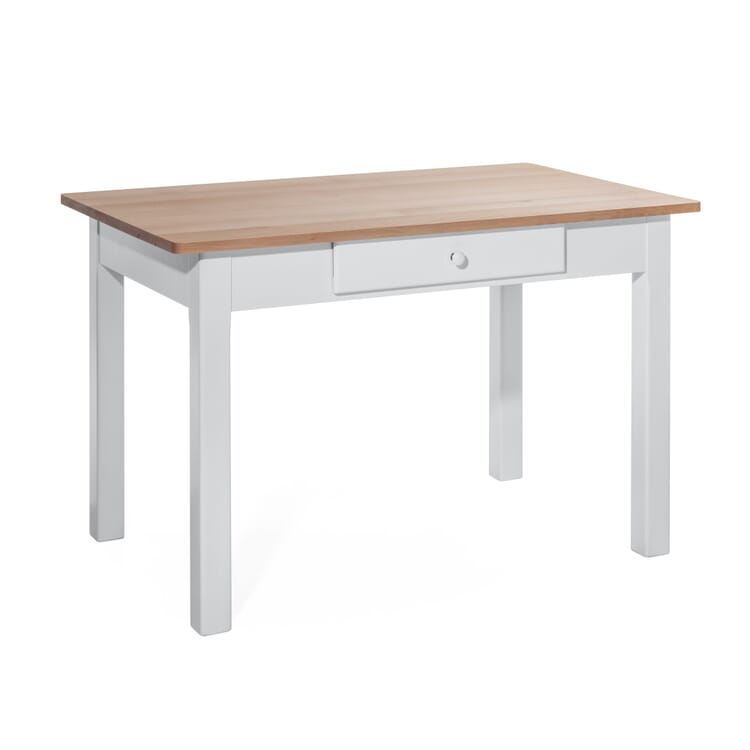Manufacturer portrait
Upholstered furniture from Sinn
At the Sinn upholstery company, founded in Stemwede (Westphalia) in 1967, the decision was made a quarter of a century ago to focus on class rather than mass and to concentrate on the construction of individual furniture that can hardly be surpassed in terms of both construction and materials. Sinn has a stable private customer base and also an excellent reputation with clients who require individually designed upholstered furniture designed for the most intensive use, for example in aircraft construction. Thus, adherence to traditional craftsmanship and the passing on of old techniques have put Sinn on solid footing for the long term.
The wooden foundation
Upholstery is a craft that hides a significant part of its output under covers. Thus, the effort required to create an outstanding piece of seating furniture is actually only apparent in the manufacturing process. The basis of Sinn upholstered furniture is an interior frame supplied by the wheelwright, made of German beech wood and plywood with doweled corner joints, rounded at the edges to protect the upholstery and cover. The feet standing on plastic glides are made of solid oiled oak of German origin. In terms of its statics, furniture with such a base is equipped for a future as an antique.
Metal to metal. The spring core
The upholsterer builds his work in layers on the frame, and it takes skill and experience to bring a piece of seating furniture to shape - this is what the upholsterer calls the shape of the seat, which results in its form and seating quality from the interaction of the following work steps. First, wave springs made of hardened steel are clamped in place and covered with a felt insert for noise damping. With a spring core made of copper-plated spring steel wire attached to it, the shaping of the seat begins. One quality feature is the number of springs that are placed on the seat and intricately joined together by hand, another is the precise matching of springs of different sizes. Towards the edge of the seat, for example, they become stronger, so that the copper-plated springs, which are dampened by a wax coating, themselves already define the basic shape and thus the core of the seat. The great art is to strike the right balance between the static stability of the springs, which are firmly lashed together, and the necessary ease of movement of the seat surface at the same time.
Best layer(s). The actual padding
Now comes the multi-layered construction of the actual upholstery. First, the finished spring core is covered with a spring linen before the upholstery carrier made of rubber coconut (latexed and vulcanized coconut fiber), which is protected by this, is applied. Two layers of cold foam and one layer of absorbent cotton form the top layer - making a total of seven layers under the cover.
On top and around it: the cover
Sinn uses upholstery material for this furniture that is otherwise mainly at home in the demanding contract sector: theater, railroad and aircraft seats are fitted with it. First of all, there are the three- or four-ply yarn-dyed worsted yarns made from fine merino wool. Rohi in Geretsried, Bavaria, uses these yarns on Jacquard looms to produce a lace fabric weighing 720 g/m². A small amount of polyamide (4%) makes the fabric even more resistant to wear than it already would be due to the yarn quality itself (the furniture with virgin wool cover is available in different versions).
And there's one of the best furniture leathers around: vegetable-tanned cowhide from the hides of southern German bulls using extracts from olive leaves, which owes its softness and feel to a long fulling process at the end of its production. The traces of each cow's life - skin textures, scarring, insect bites - remain visible. It is a delicate leather that you should take care of, but it will become more beautiful with time and with every touch and ray of light. We offer it in two color variants: Braun (aniline dyed) and black (semi aniline dyed).









